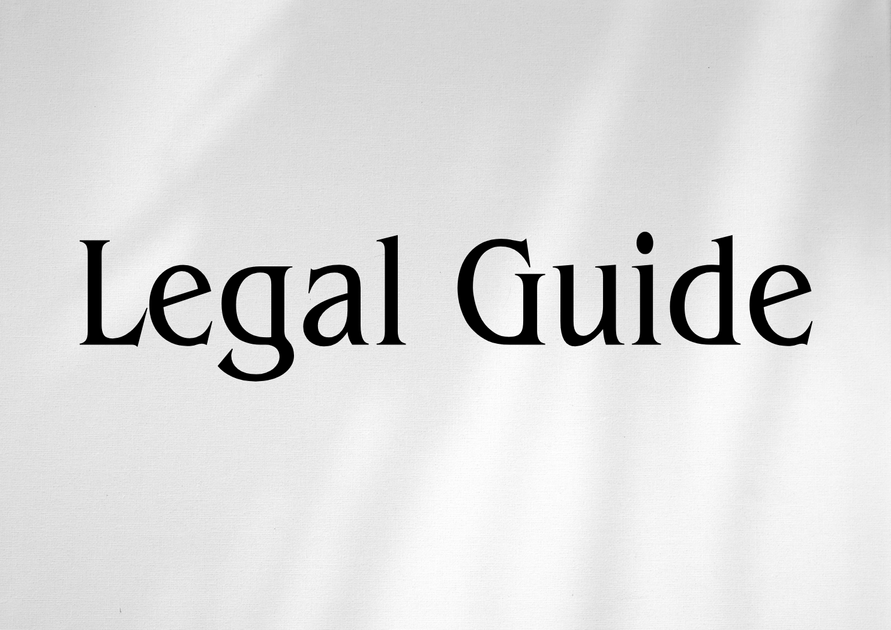Introduction: Understanding Aircraft Repossession in Qatar and Its Relevance for UAE Stakeholders
The global aviation sector is a complex landscape, marked by high-value asset investments and intricate cross-border regulations. For UAE-based lessors, financiers, airlines, and legal professionals, understanding the legal framework for aircraft repossession in neighboring Qatar is essential. As aviation finance transactions frequently transcend GCC borders, developments or shifts in Qatari law can have substantial operational and strategic consequences for stakeholders based in the UAE. Aircraft repossession—a process by which a lessor or lender recovers possession of an aircraft due to a lessee’s default—is a particularly sensitive and consequential mechanism, impacting asset risk, commercial continuity, and reputational exposure. The Qatari legal framework, influenced by both domestic legislation and international aviation conventions, presents unique practical challenges and opportunities. This analysis offers a detailed expert perspective for businesses, executives, HR managers, and legal practitioners invested or involved in aviation operations between Qatar and the UAE. It clarifies key legal provisions, compares them with regional benchmarks, identifies risk and compliance requirements, and outlines strategies for safeguarding assets while minimizing disruption and legal exposure.
Table of Contents
- Legal Overview: Qatari Laws and International Conventions
- Detailed Breakdown: Aircraft Repossession Process in Qatar
- Comparison Table: Qatar versus UAE Aircraft Repossession Laws
- Case Studies and Practical Examples
- Risks of Non-Compliance and Penalties
- Compliance Strategies and Best Practices
- Conclusion: Navigating Aircraft Repossession Risks—A Forward Outlook
Legal Overview: Qatari Laws and International Conventions
Primary Domestic Legislation
Aircraft repossession in Qatar is governed principally by Law No. 15 of 2002 (the Civil Aviation Law) and its subsequent amendments. The law is enforced by the Qatar Civil Aviation Authority (QCAA), which regulates the registration, de-registration, and enforcement of security interests in aircraft within the State of Qatar.
Key features of the Civil Aviation Law include:
- Stipulation of ownership and registration requirements for aircraft operating in Qatar
- Provisions governing mortgages and security rights over aircraft
- The process for deregistration and export of aircraft—crucial for out-of-court repossession
- Regulation of the judicial process for enforcement of contractual rights, including repossession
International Legal Framework: The Cape Town Convention
Qatar has ratified the Convention on International Interests in Mobile Equipment and its Protocol on Matters Specific to Aircraft Equipment (commonly known as the Cape Town Convention and Aircraft Protocol). This international legal instrument, recognized by many GCC states and major aviation markets, establishes a unified regime for the recognition, registration, and enforcement of security interests in aircraft. Significantly, the UAE is also a contracting state, ensuring some degree of legal harmonization and predictability in cross-border asset recovery.
The Cape Town Convention confers creditors (lessors and financiers) with certain rights, including:
- The ability to register interests and rights on the International Registry
- Entitlement to interim relief in the event of debtor default
- Access to expedited remedies, including repossession, deregistration, and export without undue delay
Recent Legal and Regulatory Developments
In the evolving regulatory context of the GCC, Qatar’s authorities have taken steps to enhance creditor rights and increase transparency, aligning more closely with international best practices. Practical improvements include streamlined procedures for registering security interests and prompt action by the QCAA upon submission of appropriate documentation by lessors or their representatives. Notably, the QCAA routinely cooperates with overseas authorities, especially when dealing with aircraft that operate across regional borders, including the UAE.
Detailed Breakdown: Aircraft Repossession Process in Qatar
Step 1: Establishment of Security Interests and Registration
The first and most essential compliance checkpoint for lessors (and financiers) is the proper establishment and registration of security interests in accordance with both Qatari law and the Cape Town Convention framework. The typical process involves:
- Ensuring the lease, mortgage, or security document is recognized under Qatari law and complies with the formal requirements of the Civil Aviation Law
- Registering the interest with the QCAA’s Aircraft Registry for domestic recognition
- Registering the international interest on the International Registry under the Cape Town Protocol
Failure to adhere to these requirements at the outset can significantly complicate future enforcement action, as unregistered or improperly documented interests may not enjoy priority status in insolvency or default scenarios.
Step 2: Identification of Default and Contractual Remedies
Once a lessee defaults (typically non-payment, unauthorized use, or insolvency), the creditor must confirm that the default triggers repossession rights as outlined in the contractual documentation. Qatari courts generally uphold freedom of contract, provided the terms do not violate public policy or overriding Qatari legal provisions.
Step 3: Initiation of the Repossession Process
Aircraft repossession in Qatar can proceed via two avenues:
- Out-of-court (summary) repossession—available where lessors have obtained an irrevocable deregistration and export request authorization (IDERA) registered with the QCAA (as provided under the Cape Town Convention), allowing expedited action once default is established.
- Judicial process—where the lessor approaches the Qatari courts to obtain a judgment for repossession and enforcement. This route may be necessary when disputes arise or where the IDERA is not in place.
While the Cape Town framework encourages out-of-court enforcement, practical realities—such as local operator resistance, governmental discretion, or counterclaims by the lessee—can still introduce delays that must be factored into risk assessments and operational planning for UAE lessors active in Qatar.
Step 4: Deregistration and Export of the Aircraft
Following the grant of repossession rights and clear evidence of default (such as court order or exercise of an IDERA), the lessor must work with the QCAA to deregister the aircraft and obtain the necessary clearances for export. The process requires clearance of all outstanding airport dues, regulatory fees, and other administrative conditions.
Visual Suggestion: Compliance Checklist Table
| Step | Compliance Requirement | Responsible Party |
|---|---|---|
| 1 | Register security interest on QCAA Registry | Lessor/Financier |
| 2 | Register interest on International Registry (Cape Town) | Lessor/Legal Counsel |
| 3 | Obtain and record IDERA with QCAA | Lessor/Lessee |
| 4 | Clear airport/regulatory dues | Lessee/Lessor |
| 5 | Submit formal request for deregistration/export | Lessor |
Comparison Table: Qatar versus UAE Aircraft Repossession Laws
Given the intertwined nature of the GCC aviation market, the following table compares key features of the Qatari aircraft repossession regime with those of the UAE, with references to UAE Federal Law No. 20 of 2022 (regulating civil aviation), and related UAE Cabinet Resolutions:
| Legal Feature | Qatar | UAE |
|---|---|---|
| Governing Law | Law No. 15 of 2002 (Amended) | Federal Law No. 20 of 2022 on Civil Aviation, Cabinet Decisions |
| Cape Town Convention Status | Ratified | Ratified |
| Security Interest Registration | With QCAA and International Registry | With UAE GCAA and International Registry |
| IDERA Use | Recognized and routinely accepted | Recognized and routinely accepted |
| Judicial Process Required? | Not if IDERA is in place; otherwise required | Not if IDERA is in place; otherwise required |
| Timeframe (Expedited Cases) | 2–4 weeks (IDERA processed) | 1–3 weeks (IDERA processed) |
| Local Lender Priority | Possible precedence in limited cases | Generally subordinate to registered Cape Town interests |
| Cooperation with Foreign Authorities | Generally cooperative, especially for GCC | High, especially for major global lessors |
Case Studies and Practical Examples
Case Study 1: UAE-Based Lessor Facing Borrower Default in Qatar
A leading UAE aircraft leasing company, having leased a narrow-body aircraft to a Qatari operator, registered its interest on the International Registry and secured an IDERA via the QCAA. When the lessee defaulted on monthly lease payments, the lessor issued a formal notice of default per the lease agreement, triggered the IDERA with supporting documentation, and worked with the Qatari Authority for aircraft deregistration and export. The process completed within three weeks with minimal resistance, following payment of outstanding airport charges and without need for court intervention.
Case Study 2: Absence of Registered Interest and Consequences
In another scenario, a second UAE lender financed the acquisition of a business jet in Qatar but failed to properly register its security interest with the QCAA. When the borrower entered insolvency proceedings, competing claims from local creditors led to protracted litigation. The airline was unable to secure its asset within a reasonable timeframe, incurring significant losses. The case underscores the necessity of robust legal compliance and early registration of security interests.
Hypothetical Example: Dispute over Deregistration Rights
A Qatari lessee disputes the lessor’s right to repossess, claiming technical or operational deficiencies as grounds for withholding deregistration. Qatari courts, mindful of the Cape Town principles but balancing local legal concepts of good faith and contractual performance, order expedited proceedings but require a short evidentiary hearing before authorizing the repossession. This introduces modest delays but ultimately upholds the international framework.
Risks of Non-Compliance and Penalties
Legal and Commercial Risks
Failure to comply with Qatari and international aircraft repossession protocols exposes lessors and financiers to a host of legal and financial risks, including:
- Loss of priority in insolvency proceedings if security interests are unregistered or defective
- Costly litigation and protracted recovery periods, often aggravated by competing domestic creditor claims
- Reputational risk affecting ability to lease or finance aircraft in the future
- Potential administrative or regulatory penalties for non-compliance with procedural requirements
Visual Suggestion: Penalty Comparison Chart (Table or Infographic)
| Non-Compliance Scenario | Potential Penalties | Remedial Action |
|---|---|---|
| No registration of security interest | Loss of priority/proceeds; asset blocked in insolvency | Immediately register interest; seek legal advice |
| Failure to clear airport/authority dues before export | Detention of aircraft; additional fees/penalties | Audit and settle all outstanding dues prior to repossession |
| Initiation of repossession without valid contractual/default ground | Risk of damages/claims by lessee in Qatari courts | Ensure comprehensive legal review prior to action |
| Improper documentation/IDERA execution | Repossession delayed or denied | Rectify documentation errors with QCAA guidance |
Compliance Strategies and Best Practices
Essential Steps for UAE-Based Lessors and Financiers
Given the distinctive procedural and documentary requirements in Qatar, we recommend adopting the following compliance blueprint:
- Conduct Diligent Legal Due Diligence: Engage in a thorough review of Qatari law and relevant Cape Town Convention provisions at transaction outset. Involve local Qatari counsel alongside UAE legal advisors.
- Register All Interests Advance: Ensure simultaneous filing of domestic (QCAA) and international (Cape Town) registrations. Secure and properly file the IDERA during initial aircraft registration.
- Verify Contractual Rights and Triggers: Draft robust lease documents with clear default provisions and “self-help” remedies (where permitted by law).
- Monitor Lessee Compliance: Institute proactive compliance monitoring mechanisms to detect early warnings of default or operational distress.
- Maintain Communication with QCAA: Establish and sustain direct lines of communication with the QCAA, updating documentation and clarifying questions regarding procedural steps.
- Audit Dues and Regulatory Obligations Promptly: Review and settle all outstanding airport, regulatory, and tax obligations prior to initiating repossession.
- Prepare for Dispute Scenarios: Instruct legal teams to prepare summary applications for the Qatari courts if adverse responses or conflicts are anticipated.
Visual Suggestion: Repossession Process Flow Diagram
An infographic or diagram is recommended here to illustrate the stepwise process—from detection of default through legal notices, IDERA activation, communication with QCAA, regulatory clearance, “possession” handover, and final export/deregistration.
Conclusion: Navigating Aircraft Repossession Risks—A Forward Outlook
The landscape for aircraft repossession in Qatar is shaped by a combination of advanced legal frameworks, robust regulatory oversight, and adherence to the Cape Town Convention. For UAE-based stakeholders, this regime offers both predictability and practical challenges. While Qatar’s alignment with global best practices means repo rights are generally respected, nuances in procedural compliance, documentation, and dispute resolution necessitate vigilant legal strategy and local expertise.
Looking ahead, trends toward harmonization in GCC aviation law, including potential updates to UAE federal regulations (notably the anticipated UAE Law 2025 updates) and increased adoption of digital solutions for security registration, will further support cross-border financiers and lessors in mitigating risk. We recommend that clients remain attentive to ongoing legislative changes, maintain strong advisory relationships, and regularly audit compliance workflows to ensure continued protection of valuable aviation assets.
For tailored guidance on managing cross-border aircraft financing and repossession in the GCC, consult a legal team specializing in both UAE and Qatari aviation law, with proven expertise in Cape Town Convention compliance.




